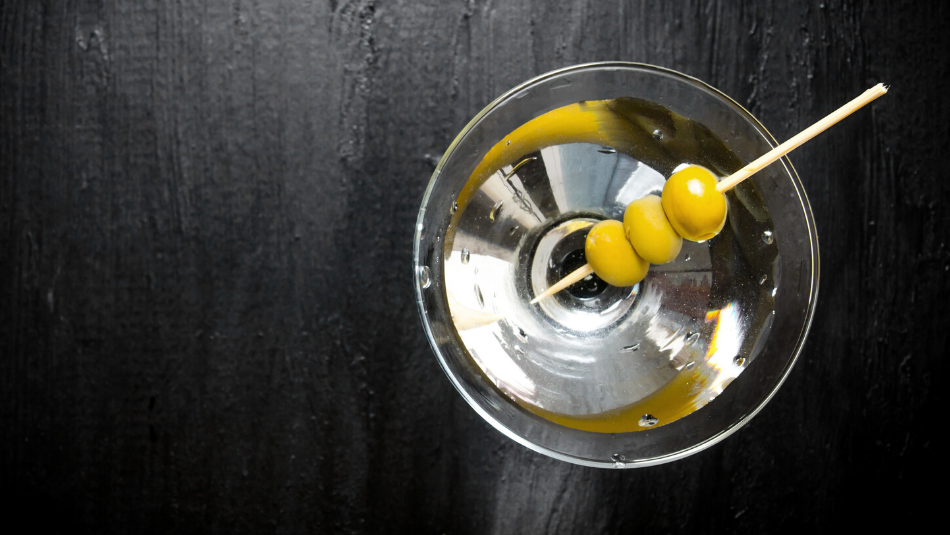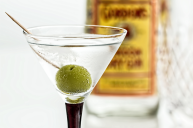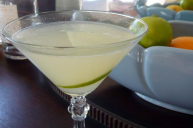There's something about martinis that's elegant and sophisticated. Maybe it's the shape of the martini glass or the mix of liqueur that makes up this classic cocktail. I think we can all agree, though that all types of martinis are pretty special and worth the shoutout.
So, what is in a classic martini you may ask? It's a simple mix of gin, dry vermouth and garnished with an olive or lemon twist. Nowadays, you can find endless amounts of twists on this cocktail like appletinis, espresso martinis and even vodka martinis. There's no stopping the creation of new martini flavors.
History of the Martini
While the exact story is unclear, it has been said that James Bond's favorite drink dates back to the late 19th century when it appeared in the manual of bartender, Jerry Thomas of the Occidental Hotel, who created the drink in Martinez, California and served it to a gold miner. Thomas mixed up the drink with the only ingredients he had in the bar and behold, the martini was born!
What are the Different Types of Martinis?
When ordering a martini at the bar, the bartender might have a few specific questions for you. Vodka or gin martini? Shaken or stirred? Wet or dry martini?
What do all of these terms mean?! Instead of being at a loss for words, we're here to help break down the different types of martinis so you can feel like an expert at the bar.
Gin Martini vs. Vodka Martini
https://www.instagram.com/p/B6epD5ulGVo/
Like mentioned before, gin was the original liqueur used in a classic martini cocktail, which has a very distinct flavor of juniper berries and pine. If the herbal flavor of gin throws you off, no worries. Go for a vodka martini. It has a smoother, more subtle flavor. You'll find vodka in cocktails like Cosmopolitan and a Lemon Drop Martini.
Dry Martini vs. Wet Martini
The difference between a dry and wet martini is the amount of dry vermouth. When you ask for a dry martini, it means you would like less vermouth in your martini cocktail. A very dry martini will contain only a drop or two of dry vermouth.
A wet martini is obviously the opposite. Ordering a wet martini will get you more dry vermouth in your cocktail.
Shaken Martini vs. Stirred Martini
James Bond prefers his martinis "shaken, not stirred," however, what does that exactly mean? Shaken means that your drink will be shaken in a cocktail shaker with ice cubes before being strained into the glass, which cools it down faster.
Stirred is a more gentle way to cool down your martini. Your drink is placed in a cocktail shaker with ice cubes, then stirred for a few seconds and strained into a glass. It's a slower way to cool down the martini, however, stirred is preferred to avoid diluting the cocktail.
Straight Up vs. On the Rocks
Straight up means your drink will be served in a chilled cocktail glass, with no signs of ice cubes. A drink on the rocks will be served with ice cubes present.
Dirty, Gibson, and Vesper Martini
Ordering a Dirty Martini will give you a classic martini and the addition of a splash of olive brine, which gives it a cloudy appearance. It's also garnished with an olive.
The Gibson takes the classic mix of gin and dry vermouth and garnished with a skewer of pickled onion rather than with a twist or skewer of olives.
If you really want to feel like James Bond, order The Vesper Martini. It's made with gin, vodka, a splash of Lillet Blanc and garnished with lemon peel.
With a Twist vs. With an Olive
Classic martinis are generally garnished with a skewer of olives. If you'd rather have a pop of citrus flavor, ask for your drink with a twist. The bartender will garnish your martini with a twist of lemon peel.




